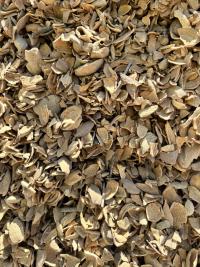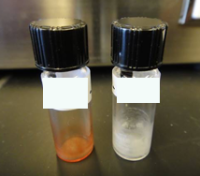Current:
Conversion of almond hulls to solid fats using yeast

Collaborators: Tina Jeoh (BAE), Payam Vahmani (Animal Sci), Andrew Gravelle (FST), Karen McDonald (BAE), Ameer Taha (FST), Boon-Ling Yeo (AQRC)
Funding: Resnick Agricultural Innovation Institute
Aim: Develop sustainable alternatives to tropical oils and animal fats. Convert almond hulls to fat using high-oil yeasts from the Phaff Yeast Culture Collection.
Past:
Production of highly saturated yeast fats

Collaborators: Payam Vahmani, Andrew Gravelle, Ameer Taha
Funding: Good Food Institute; UC Davis STAIR program
Aim: Identify high-oil yeasts that naturally produce highly saturated oils. Food and chemical producers are looking for more sustainable, non-GMO, domestic, and vegan alternatives to tropical oils and animal fats.
 Conversion of lignocellulosic hydrolysates to lipids and glycolipids using yeasts
Conversion of lignocellulosic hydrolysates to lipids and glycolipids using yeasts
Collaborators: Tina Jeoh (BAE), Peter Hernes (LAWR)
Funding: USDA-NIFA
Aims: We are identifying yeasts able to consume the sugars and lignin monomers and tolerate the inhibitors in hydrolysates of almond shells, almond hulls, wheat germ and wheat bran. The selected yeasts accumulate high concentrations of lipids, and also secrete a novel class of glycolipids with surfactant properties.
Conversion of almond hulls to high protein animal feed using yeasts
 Collaborators: Tina Jeoh (BAE),
Collaborators: Tina Jeoh (BAE),
Funding: Almond Board of California
Aims: Some yeasts from the Phaff collection are able to grow on the sugars found in almond hull hydrolysates, especially sucrose and galacturonic acid (breakdown product of pectin). These yeasts contain over 25% protein, with ideal amino acid balance for animal feed – a better quality protein than raw almond hulls.
 Identification of olive spoilage agents
Identification of olive spoilage agents
Collaborators: Maria Marco (FST)
Funding: CDFA
Aims: We identified yeasts that caused catastrophic spoilage in Sicilian style olives. This yeast, a strain of Saccharomyces cerevisiae, produced high amounts of pectin, which caused excessive softening of olives.
Production of high protein yeast from agricultural residues
 Collaborator: Tina Jeoh (BAE)
Collaborator: Tina Jeoh (BAE)
Funding: Mars
Aims: We compared ability of 250 high protein yeasts to consume sugars and tolerate inhibitors potentially present in lignocellulosic hydrolysates. Compatible yeasts were grown in